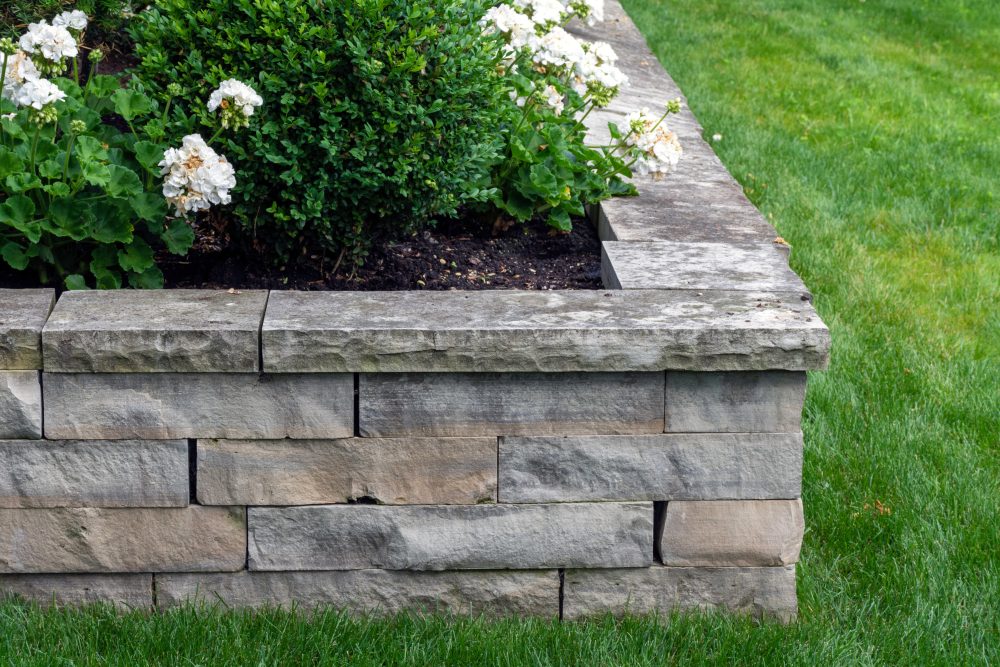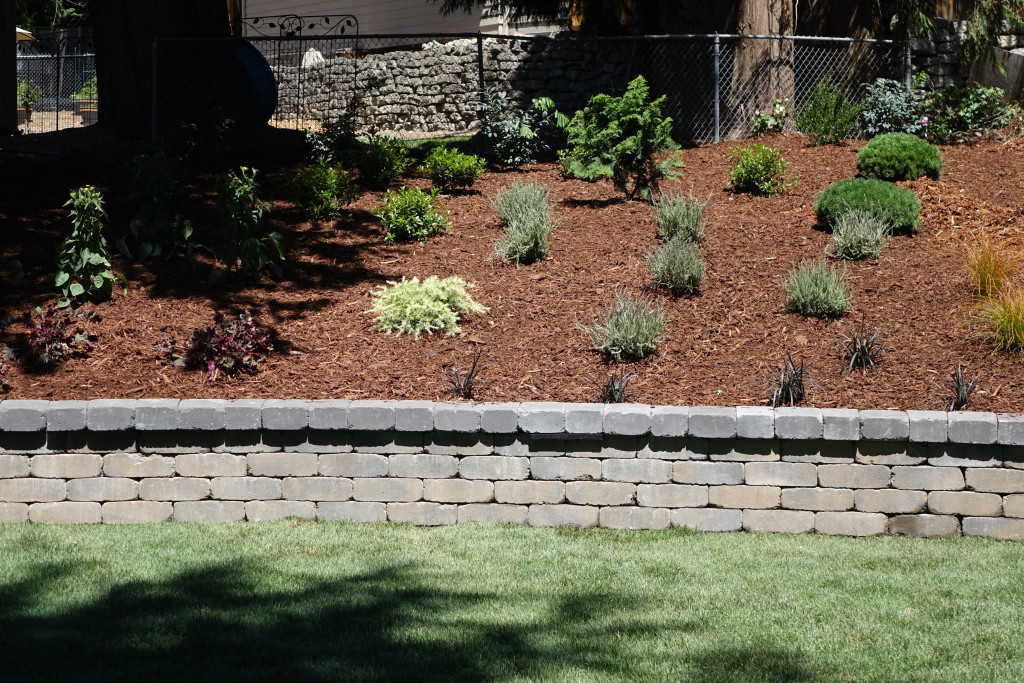The Crucial Guide to Understanding the Performance of Retaining Walls
When it pertains to managing sloped landscapes, retaining walls are crucial. They not just keep back soil yet also protect against erosion and protect your residential property from prospective landslides. Recognizing their performance can help you make educated decisions concerning design and upkeep. What kinds of retaining walls are offered, and how do you choose the ideal materials? Let's check out these vital considerations even more.
What Are Retaining Walls and Their Function?
Retaining walls are crucial frameworks created to hold back soil and prevent erosion, especially on sloped landscapes. When you assume concerning a maintaining wall, consider its role in handling water runoff, which can erode dirt over time.
In addition, retaining walls can develop usable areas in your yard. By leveling out a sloped location, you can acquire more practical exterior area for gardening, patio areas, or play areas. The design and materials you select can enhance your home's aesthetics, making it aesthetically appealing.
Inevitably, comprehending the objective of retaining walls assists you value their relevance in landscape administration (OKC Precision Retaining Walls). They not only secure your residential or commercial property but additionally add to the total charm and capability of your exterior space
Kinds of Retaining Walls: An Overview
When it comes to taking care of dirt and water drainage in your landscape, knowing the different types of retaining walls can assist you make an enlightened choice for your residential or commercial property. Gravity walls depend on their weight to hold back soil, making them a durable choice for smaller sized inclines. Cantilever walls, on the other hand, utilize a lever-like design, which allows them to sustain more significant tons with much less product.
Trick Products Utilized in Retaining Wall Construction
To create a durable and efficient retaining wall, picking the appropriate materials is essential. Precast concrete blocks deal versatility in design, while put concrete provides a smooth appearance.
Wood is one more alternative, particularly for smaller sized walls, however maintain in mind it might not last as long due to decay. Steel and gabion walls, which use cable mesh filled with rocks, are additionally reliable for specific scenarios.

Design Factors To Consider for Efficient Retaining Walls
Designing an efficient retaining wall involves careful factor to consider of several vital aspects, as the wall surface needs to stand up to both vertical and side forces. Initially, evaluate the soil type and its residential or commercial properties; cohesive dirts act in a different way than granular ones. You'll likewise desire to figure out the height of the wall, as taller walls require more robust design services.
Next, consider water drainage. Proper drainage prevents water buildup behind the wall surface, minimizing pressure and prospective failure. Include weep openings or drainage pipelines for efficient water monitoring.
Additionally, think about the products you'll utilize. Different products, like concrete, rock, or hardwood, deal varying toughness and aesthetic appeals.
Finally, do not forget neighborhood policies and codes. They frequently dictate layout requirements and construction practices. By attending to these factors to consider, you can guarantee your retaining wall is not only practical but also resilient and safe.
Applications of Retaining Walls in Landscape Design and Construction
Retaining walls offer a crucial duty in both landscaping and building, as they assist manage changes in elevation and protect against soil erosion. In landscaping, you can utilize them to create stunning terraced gardens, enabling you to maximize your exterior space while including aesthetic interest. They additionally assist specify areas, such as pathways or blossom beds, boosting your landscape's general layout.
In building, retaining walls give stability to structures improved sloped land, ensuring safety and security and toughness. They're often made use of in highways and industrial homes to handle earth motion and drain properly. By preventing soil from shifting, retaining walls safeguard structures and preserve the honesty of your structure projects.
Whether you're looking to boost curb appeal or assurance architectural stability, retaining walls provide useful remedies that can substantially profit your landscape and construction ventures. Accept their adaptability to accomplish both aesthetic and practical objectives.
Upkeep Tips for Long-Lasting Retaining Walls
To keep your retaining walls in great shape, routine assessments and prompt repair services are essential. You also require to assure correct water drainage remedies to stop water accumulation, which can compromise the structure. Taking care of plant life around the walls will certainly help maintain their stability and prolong their life expectancy.

Routine Maintenances
While you might believe your retaining wall can stand solid on its very own, routine inspections and timely fixings are crucial for its durability. Inspect your wall surface at least two times a year for cracks, protrudes, or signs of wear. Seek any type of shifting in the soil surrounding the wall, as this can suggest much deeper problems. If you detect a trouble, address it instantly; a tiny split can rapidly develop into a substantial architectural failure. Fixing harmed sections promptly can conserve you cash and avoid extensive damages down the line. In addition, keep the area around the wall surface clear of debris to avoid wetness build-up. By being proactive about maintenances, you'll guarantee your retaining wall surface remains strong and functional for several years ahead.
Proper Drainage Solutions
Efficient drain is necessary for maintaining the stability of your retaining wall, as water buildup can bring about considerable structural concerns. To assure appropriate water drainage, mount weep holes at routine intervals along the wall. These little openings allow excess water to escape, stopping pressure buildup behind the wall. You must also consider including a drain pipeline at the base of the wall surface, guiding water away from the framework. Usage crushed rock backfill to promote drain and decrease dirt saturation. Routinely check and remove any kind of debris from drainage systems to maintain circulation. By implementing these options, you'll improve the longevity and security of your retaining wall surface, protecting it against potential damages brought on by water build-up.
Vegetation Management Strategies
Healthy vegetation can play an important duty in the longevity of your retaining wall surface. Beginning by choosing ingrained plants that aid stabilize the soil without triggering stress on the wall.
It's essential to stay clear of overwatering, as too much dampness can deteriorate the wall's foundation. By implementing these vegetation management strategies, you'll sustain your retaining see this site wall surface's toughness and improve the surrounding landscape's beauty.
Common Problems and Solutions for Retaining Walls
When it pertains to retaining walls, soil erosion and drain problems can cause major headaches. You need to guarantee your wall is correctly made to stop disintegration and has an effective water drainage system in location. Let's check out some usual problems and their options to keep your retaining wall sturdy and useful.
Soil Erosion Prevention
Soil erosion can be a substantial obstacle for retaining walls, especially otherwise properly dealt with. When soil deteriorates, it can weaken the wall surface's security, bring about prospective failures. To stop this, you must consider growing vegetation along the wall surface's base. Origins help hold the dirt with each other, reducing erosion. Furthermore, using disintegration control blankets or mats can give immediate defense while plants establish. You can additionally use compost to reduce surface area runoff and shield the soil. Normal maintenance, like evaluating for splits or signs of shifting, is vital to catch issues early. By taking these positive actions, you can considerably improve the longevity and performance of your retaining wall surface versus soil disintegration.
Water Drainage System Importance
A trusted drainage system is vital for the performance and longevity of retaining walls. Keeping appropriate water drainage not only shields your retaining wall surface yet additionally assures the bordering landscape continues to be steady. By remaining positive, you can avoid expensive repairs and extend the life of your retaining wall.
Regularly Asked Concerns
How Do Retaining Walls Influence Water Drainage Equipments?
Retaining walls can substantially affect drainage systems by rerouting water flow. They prevent dirt erosion and manage groundwater degrees, guaranteeing stability. If you're planning building and construction, think about just how they'll engage with your drainage layout for optimal outcomes.
Can Retaining Walls Be Mounted on Slopes?
Yes, you can set up retaining walls on slopes. They help support the dirt and stop disintegration. Simply guarantee appropriate drainage and select pop over here the appropriate products to deal with the stress from the soil behind the wall.
What Is the Life-span of a Normal Retaining Wall Surface?
A normal retaining wall surface lasts around 20 to 50 years, relying on materials, upkeep, and environmental problems. You need to regularly check it to assure its longevity and resolve any problems without delay to avoid expensive fixings.
Are Permits Needed for Structure Retaining Walls?
Yes, you normally need authorizations for developing retaining walls. Inspect your local building codes and laws to assure conformity. It's crucial to protect the ideal authorizations before beginning your project to prevent potential penalties or concerns.
Exactly How Do Retaining Walls Influence Building Value?
Retaining walls can favorably impact your property value by enhancing looks, stopping erosion, and developing useful exterior area. OKC Precision Retaining Walls. They also show excellent land monitoring, making your property much more appealing to potential purchasers in the see this here marketplace